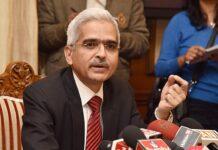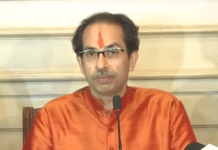
Indian Rupee is at record low now. In this article the author has analysed reasons behind the slide of rupee and has evaluated the interventions and measures taken and proposed by the regulators for their effectiveness.
India Economy recently showed upward trend recording 8.2% growth in GDP in first quarter of 2018-19, however, ironically Indian Rupee (INR) is weak and at the lowest in recent history nosediving to about 73 Rupees against USD which is almost 13 % loss in value since early this year. It is claimed that at the moment Indian Rupee is worst performing currency in Asia.

What are the variables that determine the value of a currency vis-à-vis other currency particularly against USD or GBP? What are the factors responsible for the plunge of INR? Apparently, key role is played by Balance of Payment (BoP) situation viz. how much foreign currency (read USD) you spend on your imports and how much USD you earn from exports. There is a demand of dollar to pay for the imports which is met by supply of dollar primarily by way of exports. This demand and supply of dollar in the domestic market plays key role in determining value of Rupee vis-à-vis dollar.
So, what’s really going on? For her energy needs, India is hugely dependent on petroleum. It is crucial for sustaining economic growth especially industrial and agricultural sectors. Almost 80 % of India’s petroleum requirement has to be imported. The price of oil is on upward trend. The net effect is higher import bill and hence increased demand of dollar to pay for the oil import.
The other area of concern is FDI. As per Reserve Bank of India (RBI), foreign investment is USD 1.6 billion 2018-19 (April-June) against USD 19.6 billion 2017-18 (April-June) because foreign investors withdrew their money from the Indian market due to increase in interest rate in developed economies. This has further increased demand of dollar for remittance by foreign investors. Also, India being world’s largest importer of arms there are high value defence procurement bills.
The supply of the dollar in the Indian market is mainly by way of exports and foreign investments and remittances. Unfortunately, this has failed to keep pace with the demand hence the demand and supply shortfall is leading to costlier dollar and cheaper rupee.

So, what has been done to correct the demand and supply gap in dollar? The RBI has intervened by selling dollar and buying rupee from the market to ease the gap. In the last four months, RBI has pumped in about USD 25 billion in the market. This is a short-term measure and has not been effective so far as rupee is still in almost free fall.
On 14 September 2018, government announced five measures to increase inflow and reduce outflow of dollar which mainly relates to attracting foreign investment in India by relaxing rule for manufacturers to raise fund overseas and issue of rupee bonds in international markets. Will this be helpful in increasing inflow of dollar in India? Looks unlikely because foreign investors had taken advantage of low interest rates in developed economies and invested money in Indian and other emerging markets particularly in debt market. Now the interest rates in OECD countries are on upward swing so they withdrew and remitted back significant part of their Indian portfolio.
How about long terms measures such as reducing dependence on import of oil, enhancing exports, self-reliance on arms and defence equipment etc?
Oil is very crucial for sustaining economic growth but how about conspicuous consumption by private vehicles? The number of private cars per kilometre motorable road is very high particularly in big cities. The capital city of Delhi has the reputation of being worst polluted city in the world largely because of uncontrolled increase in number of vehicles. A policy initiative aimed at reducing number of motor vehicles in cities will do great to the public good in terms of health of the people – something like ‘’London’s congestion charges’’, limiting registration of number of vehicles. Going by Delhi’s experiment with ‘’odd-even’’, such a policy initiative is likely to be unpopular hence the lack of political will.
Promotion of manufacturing and export is likely to help. ‘’Make in India’’ does not seem to have made a dent yet. Apparently, demonetisation and implementation of GST had adverse impact on manufacturing. Weak rupee is not helping export either. India spends huge amount of foreign exchange on import of defence equipment. It is paradoxical to note that while India has done very well in building capacity in science and technology particularly in the area of space and nuclear technology, yet it is unable to meet its defence needs indigenously.
The currency woes of India would require long-term effective measures to reduce outflow and enhance inflow of dollar.
***
Author: Umesh Prasad
The author is an alumnus of the London School of Economics and UK based former academic.
The views and opinions expressed on this website are solely those of the author(s) and other contributor(s), if any.





















